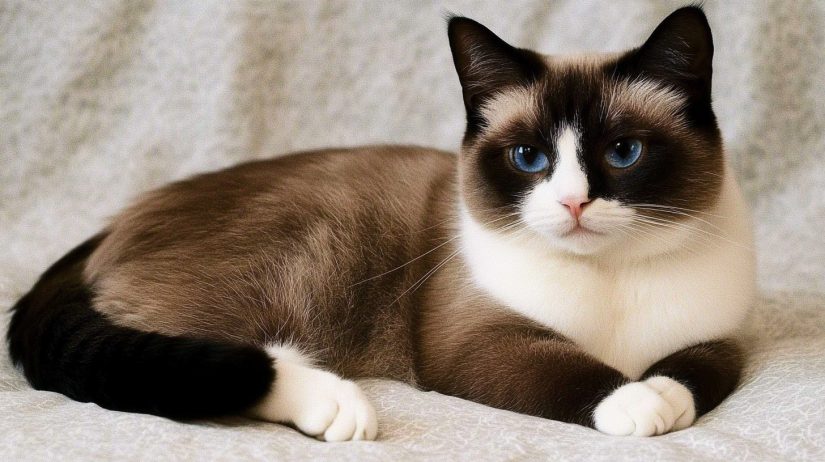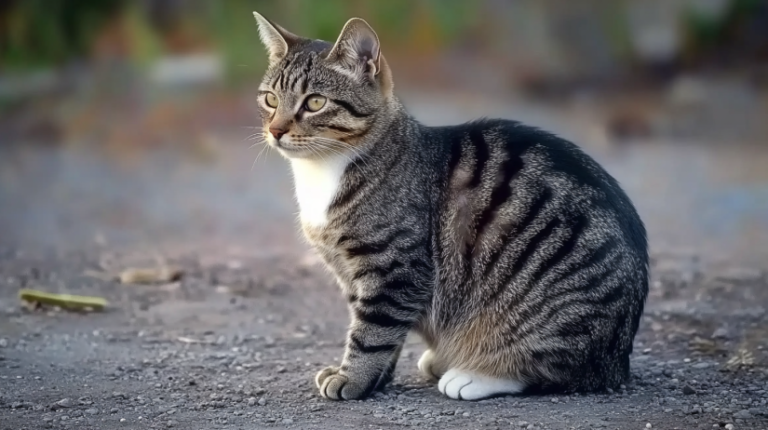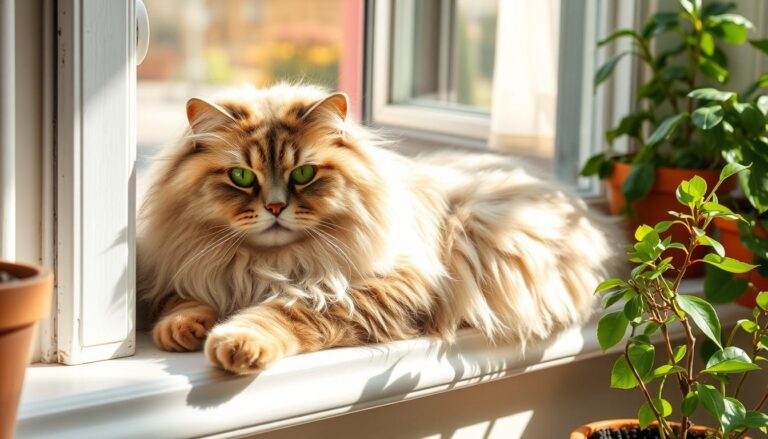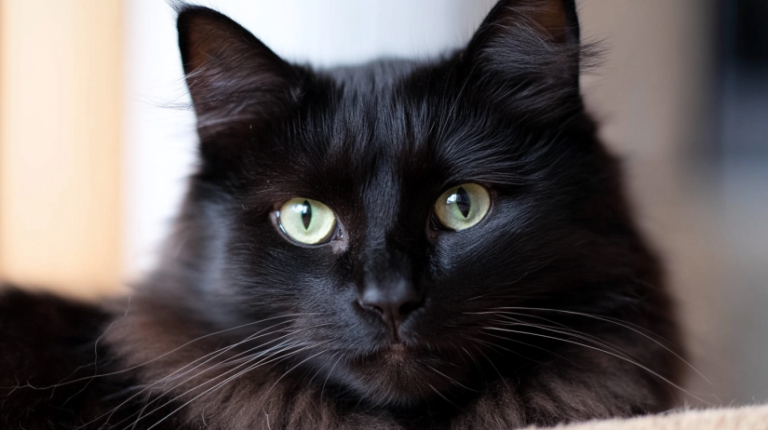Siamese Mix Cats: 7 Remarkable & Uplifting Secrets
Introduction
Picture this: You come home after a long day, and there’s a melodious, chatty meow greeting you from across the room. You see a sleek, graceful cat with bright, inquisitive eyes, ready to curl up in your lap—or climb onto your shoulders if you let them. That’s the kind of welcome you might expect from siamese mix cats, who often inherit the Siamese’s famously talkative and sociable nature while adding new dimensions from their other breed lineage.
You might find yourself drawn to these lovable felines because of their striking color points or the enchanting blend of features inherited from, say, a tabby, Persian, or Maine Coon parent. Or perhaps you’ve heard that Siamese cats are among the most vocal and people-oriented breeds, and you hope a mix might share those delightful traits. siamese mix cats come in all kinds of shapes, sizes, and personalities, but they almost always combine the best of both worlds. In this article, we’ll explore the origins, behaviors, and care requirements of these captivating cats so you can decide if one belongs in your home.
The Origins of Siamese Mix Cats
A Brief History of Siamese Cats
Siamese cats originated in what is now Thailand (historically known as Siam), where they were revered for their elegance and distinct color markings. According to the Cat Fanciers’ Association (CFA), Siamese cats were once prized in royal palaces, where they were often treated like feline nobility. In the late 19th century, they were introduced to the West, rapidly gaining popularity due to their striking appearance and talkative personalities.
How Mixes Come to Be
When breeders or cat enthusiasts mate a Siamese with another cat breed—or when accidental pairings occur—the result is a Siamese mix. Sometimes the intention is to blend the Siamese’s affectionate and vocal traits with another breed’s coat color or personality. Other times, it happens simply because two cats found each other in the neighborhood. Regardless of the reason, siamese mix cats can display a wondrous variety of looks and behaviors.
Popular Siamese Mixes
- Siamese–Tabby Mix: Often results in a cat with subtle color points combined with tabby stripes.
- Siamese–Maine Coon Mix: May yield a larger, fluffier coat and a somewhat quieter temperament compared to a pure Siamese.
- Siamese–Persian Mix: Tends to produce a calmer, more laid-back cat with a plushier coat, while retaining those trademark Siamese color points.
- Siamese–Burmese Mix: Sometimes yields an extra-playful, social cat that loves both human attention and puzzle games.
- Siamese–Balinese Mix: Can create a long-haired cat that remains intensely vocal and interactive. Learn more about Balinese traits by visiting this resource.
While each of these combinations brings unique features, almost all siamese mix cats have a strong inclination toward human companionship and a delightful streak of curiosity.
Recognizing Siamese Mix Cats: Physical Traits and Coat Patterns
siamese mix cats might retain some or all of the Siamese’s hallmark color-point pattern, which is typically darker on the ears, tail, paws, and sometimes the face. But the exact appearance depends heavily on genetics. Here are a few coat patterns you may notice:
- Color Points Plus Markings: A Siamese–Tabby mix might display tabby striping primarily on the legs or tail but still exhibit color-point shading.
- Subtle Points: Not all Siamese mixes develop strong color points. Some may appear as “faint pointed” or have minimal shading.
- Partial Mask: Instead of a full, dark mask on the face, Siamese mixes might show a partial or broken mask pattern.
- Longer Coats: If the other breed has longer fur (e.g., Persian or Maine Coon), you may see a semi-long or fully long coat with pointed coloration.
| Trait | Possible Variations in Siamese Mix Cats |
|---|---|
| Coat Length | Short, medium, or long (depending on the non-Siamese parent). |
| Coat Pattern | Potential for color points, tabby stripes, tortoiseshell swirls, or other hybrid patterns. |
| Eye Color | Often vivid blue (from Siamese heritage), but can also be green, gold, or even two different colors. |
| Body Build | Can range from sleek and lean like a pure Siamese to stockier frames like other breeds. |
| Face Shape | May retain the Siamese’s wedge-shaped head or inherit rounder features from the other parent. |
No two siamese mix cats look exactly alike, and that’s part of their charm. Some will more closely resemble their Siamese lineage, while others might appear more like the other breed. Either way, each cat is a one-of-a-kind companion.
Personality and Behavior of Siamese Mix Cats
Vocal and Social
One of the Siamese breed’s most notable traits is vocalization. Siamese cats love to talk, using a range of meows, chirps, and yowls to communicate their wants and needs. Many siamese mix cats inherit this chatty disposition, meaning you might find your furry friend following you around the house, narrating their day. If you enjoy holding conversations with your cat, you’ll find them an enthusiastic participant.
Affectionate Yet Independent
Despite their friendliness, siamese mix cats can also show moments of independence. They may not be clingy at every second—some will be content to observe you from a distance while calmly napping. Yet the moment they sense an opportunity to interact, many siamese mix cats leap at it, purring vigorously to show their appreciation.
Intelligent and Curious
Siamese cats rank among the most intelligent domestic felines. Therefore, siamese mix cats often display above-average problem-solving skills and curiosity. They might open cabinets, investigate corners of the house you never knew existed, or surprise you by learning how to turn on faucets. Puzzle toys and interactive play sessions are ideal for keeping these bright minds engaged.
Playful and Energetic
If you’re looking for a cat that remains playful well beyond kittenhood, siamese mix cats often fit the bill. They relish chasing feather toys, climbing cat trees, and batting around balls or toy mice. Because of their higher energy, it’s essential to provide them with ample exercise opportunities. Otherwise, boredom may lead to mischievous behaviors—like unraveling toilet paper rolls or “reorganizing” your bookshelf!
Caring for Siamese Mix Cats
Nutrition and Diet
A balanced diet is crucial for maintaining your cat’s weight and ensuring a shiny coat, strong muscles, and overall well-being. Most siamese mix cats thrive on:
- High-Quality Protein: Look for cat foods that list real meat as the first ingredient.
- Healthy Fats: Essential fatty acids help maintain coat and skin health.
- Taurine-Enriched Kibble: Cats need taurine, an amino acid that supports vision, heart, and reproductive health.
Tip: Always consult your veterinarian about the best food choice for your specific cat. Dietary needs vary based on age, activity level, and potential health concerns.
Grooming Needs
- Short-Haired Mixes: Typically require weekly brushing to remove loose fur and distribute natural oils.
- Long-Haired Mixes: May need more frequent grooming (2–3 times a week) to prevent matting.
- Nail Trimming: siamese mix cats benefit from regular nail trims, ideally every 2–4 weeks.
- Teeth and Ears: Dental care is often overlooked. Use vet-approved cat toothpaste weekly, and occasionally check ears for wax or debris.
Exercise and Enrichment
Because siamese mix cats are often energetic, they thrive when they have plenty of toys and puzzles:
- Wand Toys: Great for interactive play that mimics hunting.
- Cat Trees and Perches: Offer vertical space and vantage points for your cat’s curiosity.
- Treat-Dispensing Puzzles: Provide mental stimulation and reward problem-solving.
- Play Sessions: Aim for a few sessions each day to burn off energy and strengthen your bond.
Veterinary Care and Preventive Measures
Regular veterinary visits are vital. Beyond routine checkups and vaccinations, your vet can help monitor for any breed-specific issues, such as:
- Dental Problems: Siamese cats can be prone to oral health challenges, passed down to siamese mix cats.
- Respiratory Issues: Some mixes with flatter faces or elongated snouts might develop breathing difficulties.
- Obesity: Overfeeding or lack of exercise can lead to weight gain, exacerbating other health problems.
Keep up with scheduled vaccinations, parasite control, and annual wellness exams. Catching problems early can give your cat more years and a better life.
Common Health Concerns in Siamese Mix Cats
While siamese mix cats are generally healthy, they can inherit specific predispositions from their Siamese roots:
- Progressive Retinal Atrophy (PRA): A condition affecting the eyes, eventually leading to vision loss.
- Amyloidosis: A rare disease where proteins accumulate in organs like the liver or kidneys.
- Asthma or Other Respiratory Concerns: Some mixes show respiratory sensitivities, exacerbated by stress or environmental factors.
Remember, not all siamese mix cats will develop these issues. With attentive care and regular vet checkups, many can live long, healthy lives. For more in-depth information about specific breed health, you might also explore reputable resources like the American Veterinary Medical Association (AVMA).
Socialization and Training
Starting Early
Expose your siamese mix cats to gentle handling, new people, and household activities from a young age. This early socialization helps them become confident, well-adjusted adults who handle change more gracefully.
Positive Reinforcement
Siamese cats (and their mixes) respond well to positive reinforcement training. You can:
- Use Treats and Praise: Reward good behavior immediately with a small treat or a reassuring “Good kitty!”
- Redirect Misbehavior: Instead of punishment, offer an alternative. For example, if they scratch furniture, provide a sturdy scratching post.
- Clicker Training: Some cat owners successfully use clickers to teach cats to come, sit, or even perform tricks.
Curbing Undesirable Behaviors
Although siamese mix cats are generally good-natured, they can develop unwanted behaviors like excessive meowing, scratching, or jumping on counters. Often, the root cause is boredom or insufficient mental stimulation. Address these issues by:
- Offering more play sessions.
- Rotating different toys to maintain novelty.
- Providing quiet, cozy areas for retreat.
Bringing a Siamese Mix Cat into Your Home
Adoption vs. Breeder
You can find siamese mix cats in shelters or through rescue organizations, often at a lower cost than buying from a breeder. Adopting also helps reduce the number of cats in need of homes. However, if you want specific lineage details or a particular type of mix, a reputable breeder may provide that insight. Always vet your breeder carefully to ensure ethical practices.
Preparing Your Home
- Cat-Proofing: Remove hazardous items, secure cables, and store toxic cleaning supplies out of reach.
- Designated Cat Area: Provide a comfortable bed, litter box, and feeding station in a low-traffic area.
- Interactive Toys: Keep an assortment of toys ready to engage siamese mix cats from day one.
Introducing to Existing Pets
Gradual introductions can help avoid territorial conflicts:
- Scent Swapping: Let the newcomer sniff items belonging to resident pets (and vice versa).
- Short, Supervised Meetings: Keep initial interactions brief and calm, offering treats for positive associations.
- Separate Safe Zones: If tension arises, allow each pet their own “safe space” to retreat to.
Real-Life Anecdotes: Siamese Mix Cat Stories
Case Study 1: Bella the Siamese–Tabby Mix
Bella’s owner adopted her from a local shelter, intrigued by her bright blue eyes and faint stripes on her tail. Despite starting life as a timid stray, Bella quickly grew confident after receiving consistent, gentle socialization. Now, she follows her human everywhere, greeting them with chirps, and “helps” fold laundry by diving into warm clothes right out of the dryer!
Case Study 2: Max the Siamese–Burmese Mix
Max was born in a reputable cattery, intentionally bred to combine the Siamese’s vocal, outgoing personality with the Burmese’s playful, affectionate temperament. His owners report that Max learned to fetch small balls, greet visitors at the door, and even respond to his name. He is famously known for leaping onto shoulders for a cuddle—a prime example of the friendly vibe you’ll find in many siamese mix cats.
Potential Challenges with Siamese Mix Cats
- High Energy Demands: Some owners might find it challenging to keep up with daily play needs.
- Vocalization: If you prefer a quiet home, a Siamese mix’s chatter may feel overwhelming.
- Separation Anxiety: Siamese cats crave human interaction. Extended solitude might lead to stress or destructive behaviors.
- Health Testing: It can be harder to predict health outcomes in mixes compared to purebreds.
Note: Being aware of these challenges upfront can help you prepare to meet your cat’s physical and emotional needs.
Integrating Other Breeds with Siamese Mix Cats
siamese mix cats can coexist happily with many other felines and even certain dog breeds. If your mix has a calm, confident nature, they may become fast friends with another pet. For instance, if you’re intrigued by cats like the Burmese, you can learn about their traits here: https://www.quickypets.com/burmese-cats/. A Burmese–Siamese household often brims with playful energy, as both breeds are known for their sociable traits.
FAQs
Below, you’ll find frequently asked questions about siamese mix cats.
How do Siamese mix cats behave?
They mix the social, chatty nature of the Siamese with the qualities of another breed. siamese mix cats are usually outgoing, curious, and people-oriented. With proper care, they become loyal companions and active family members.
Are there specific feeding requirements for Siamese mix cats?
They usually thrive on a high-protein diet with necessary vitamins and minerals. siamese mix cats can have differing nutritional needs based on age and lifestyle. It’s best to get personalized advice from your veterinarian.
3) Are Siamese mix cats friendly with children?
They often get along well with kids due to their playful, social nature. siamese mix cats usually enjoy interaction and can form strong bonds with young family members. However, always supervise interactions to ensure gentle handling.
4) Do Siamese mix cats shed a lot?
The amount of shedding depends on the parent breeds. siamese mix cats with short hair typically shed less, while those with longer coats may require more grooming. Regular brushing can help minimize loose fur and hairballs.
5) Can Siamese mix cats be trained?
They tend to be intelligent and respond well to positive reinforcement. siamese mix cats can learn tricks, follow commands, and even walk on a harness. Consistency, treats, and gentle praise go a long way in training.
6) How vocal are Siamese mix cats?
They can inherit the Siamese’s talkative streak, making them quite chatty. siamese mix cats often communicate through meows, chirps, and yowls. If you enjoy a conversational cat, this may be a perfect fit for you.
Conclusion
When you welcome siamese mix cats into your home, you’re embracing a world of chatter, curiosity, and devoted companionship. These felines bring an intriguing blend of genetics, often resulting in a cat who’s both playful and people-focused. Whether their coat boasts full color points or faint markings, and whether they chat softly or in full volume, they’re bound to become treasured family members. If you appreciate a vocal, intelligent, and affectionate feline, you might find that siamese mix cats are precisely what you’re looking for. Ready to share your experiences or take the plunge into adopting one? Leave a comment below or pass this article along to someone else who might fall in love with these charming companions!







